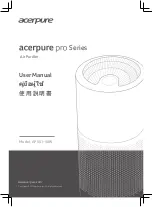
– 18 –
BdQ1PbT
4[TRcaXR
7TPc
1CD7
4[TRcaXR
7TPcTa
FPccb
4[TRcaXR
7TPc
0\_b
<X]2XaRdXc
?a^cTRcX^]
0\_b
A0:!#3 $?
'%&
!$$!(
% %
$
A0:!#3!?
&(%
"#$!'!
$$ #
!
A0:!#3"?
& "(
$#(
!!"!"
"
4[TRcaXR7TPc0\_bX]R[dSTT[TRcaXRWTPcTaP]SUP]\^c^aRdaaT]cSaPf
4[TRcaXR7TPc0\_bX]R[dSTT[TRcaXRWTPcTaP]SUP]\^c^aRdaaT]cSaPf
4PRW!%$e^[cbdQQPbTZXcR^]bXbcb^UPbdQQPbTfXcWP__a^_aXPcTaTRT_cPR[TU^a\X]X\d\RXaRdXc
P\_TaPVTPRWPbTfPhc^a^dcTcWT_^fTaR^]]TRc^aUa^\cWTbdQQPbTc^cWTRWPbbXbP]SfXaX]V
c^R^]]TRccWTbdQQPbTc^cWTQdX[SX]VfXaX]V
BdQ1PbT
?^fTa
2^]]TRcX^]
:Xc
4[TRcaXR
7TPc
1CD7
4[TRcaXR
7TPcTa
FPccb
4[TRcaXR
7TPc
0\_b
<X]2XaRdXc
?a^cTRcX^]
0\_b
A0:!#4 $
A0:$ $!
'%
!$$
% %
$
A0:!#4!
A0:$!!
&
"#$
$$ #
!
A0:!#4"
A0:$"!
&
$
!!"!"
"
;X]T2^aS
:Xc
4[TRcaXR
7TPc
1CD7
4[TRcaXR
7TPcTa
FPccb
4[TRcaXR
7TPc
0\_b
<X]2XaRdXc
?a^cTRcX^]
0\_b
A0:" $"
'%&
!$$!(
% %
$
A0:"!"
&(%
"#$!'!
$$ #
!
A0:"""
& "(
$#(
!!"!"
"
4[TRcaXR7TPc0\_bX]R[dSTT[TRcaXRWTPcTaP]SUP]\^c^aRdaaT]cSaPf
The RAK4002A has a
7
/
8
” diameter hole to allow
conduit to be connected to the junction box. A line
cord kit (see
230/208-Volt Line-Cord Connected Units
)
must be purchased and
modifi ed to allow direct
connection to the building wiring.
The line cord kit should be cut about 8 inches away
from the 9-pin connector. Strip the insulation off
the end of each conductor to expose wires for fi eld
connection. These wires are then connected to the
building wiring by fi eld-supplied connectors.
230/208-Volt Sub-Base Connected Units
265 or 277-Volt Unit Installation ― Permanently
Connected Units
National Electric Code (Article 440 Section G)
requires permanent connection for units connected
to power sources over 250 volts; therefore these
units must be permanently connected (direct wired)
with fi eld-supplied connectors. Units connected
using a sub-base meet the requirement for
permanent connection since all wiring is internal
wiring between the sub-base and the chassis. Since
265-volt units may not be line cord connected, an
LCDI device is not required.
265-Volt Sub-Base Connected Units
Note:
The 265-volt power connection kit must be
ordered separately. All wiring must conform to local
electrical regulations and codes.
Power Connection
230/208-Volt Line-Cord Connected Units
Line Cord Kits consist of a self-aligning nine-
pin molded connector that plugs into a mating
connector on the Zoneline chassis, and an insulated
line cord with an electrical plug on the end. The
confi guration of the electrical plug conforms to NEC
standards for the circuit amperage, and the position
of the wires in the nine-pin connector determines
the heater wattage and current requirements when
it is plugged into the Zoneline chassis.
The power connection kit is selected by the
amperage of the circuit where it will be installed.
Each line cord kit has an integral Leakage Current
Detection and Interruption (LCDI) or Arc Fault
Current Interrupter (AFCI) device as required by the
National Electrical Code (NEC) and Underwriters
Laboratory (UL) for line-cord connected air
conditioners manufactured on or after August
1, 2004. The line-cord power connection kits are
shown in the table below.
230/208-Volt Line-Cord Connected Units
230/208-Volt ― Permanently Connected Units
Permanently connected units do not require the
LCDI or AFCI device. Permanent connection is
usually made through the use of a sub-base. Each
230/208-volt sub-base consists of a sub-base
with appropriate receptacle for minimum circuit
amperage, a chaseway to route power connector
from the sub-base to the chassis, wiring to connect
the sub-base to building wiring, and a short line cord
with a self-aligning nine-pin connector to connect
to the chassis and plug into the receptacle in the
sub-base. Permanent, or direct wired, installation
of a 230/208-volt unit requires a junction box kit,
RAK4002A, which attaches to the chassis to form
an enclosed junction box. The short sub-base line
cord may not be used without the sub-base. For
2800 and 3800 Series 230/208-volt units where
a permanent installation using fl exible conduit is
desired, the RAK4002A forms an enclosed junction
box on the chassis.
















































